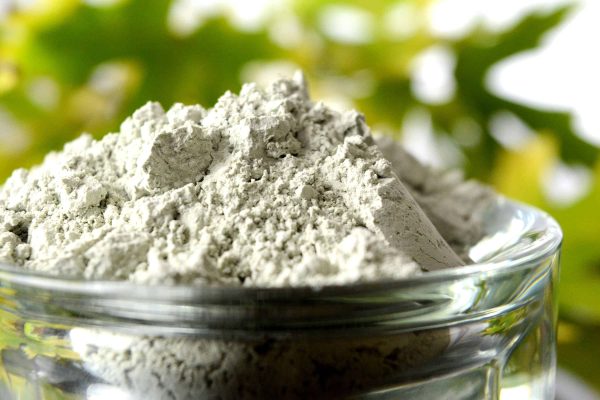
As a functional filler with excellent performance, silicon micropowder has excellent properties such as high insulation, high thermal conductivity, high thermal stability, acid and alkali resistance, low thermal expansion coefficient and low dielectric constant, so it is used in copper clad laminates. The application of the industry is becoming more and more extensive. At present, silicon micropowder used in integrated circuit copper clad laminates mainly includes crystalline silicon micropowder, molten (amorphous) silicon micropowder, spherical silicon micropowder, composite silicon micropowder and active silicon micropowder.
The main raw material of crystalline silica powder is selected high-quality quartz ore, which is a silica powder material processed through grinding, precision classification and impurity removal, which can improve the physical properties such as linear expansion coefficient and electrical properties of downstream products such as copper clad laminates. . Its advantages are white color, pure quality, stable physical and chemical properties, and reasonable and controllable particle size distribution. Crystalline silica powder can be divided into three types: high-purity crystal silica powder, electronic grade crystal silica powder and general packing grade crystal silica powder.
The main advantages of crystalline silica powder are early start, mature and simple process, and relatively cheap price, which has a great effect on improving the stiffness, thermal stability and water absorption of copper clad laminates. Its main disadvantages are: the impact on the resin system is not optimal, the dispersibility and sedimentation resistance are not as good as the molten spherical silica powder, the impact resistance is not as good as the molten transparent silica powder, the coefficient of thermal expansion is high, and the hardness is high, and the processing is difficult.
From the comprehensive consideration of cost and economic benefits, the price of crystalline silica powder is much lower than that of fused silica powder, and the production hardware requirements are lower, so it is more common to use high-purity crystalline silica powder in practical applications.
The main raw material of fused silica powder is selected quartz with high-quality crystal structure, which is refined by acid leaching, water washing, air-drying, high-temperature melting, crushing, manual sorting, magnetic separation, ultra-fine crushing, grading and other processes. Micronized. Its main characteristics are white color, high purity, low linear expansion coefficient, good electromagnetic radiation, stable chemical properties, good chemical corrosion resistance, controllable and orderly particle size distribution.
Compared with crystalline silica powder, fused silica powder has the advantages of lower density, hardness, dielectric constant, and thermal expansion coefficient. And other industries, its main disadvantages are the high melting temperature in the preparation process, complicated process, high production cost, and the high dielectric constant of general products, which affects the signal transmission speed.
Spherical silicon micropowder refers to the spherical shape of individual particles, a high-strength, high-hardness, inert spherical particle, which is made by melting irregularly shaped quartz powder particles at high temperature to make them spheroidize under the action of surface tension, and then cooling Silica powder processed by , grading, mixing and other processes.
Spherical microsilica powder has good fluidity and a high filling amount in the resin. After being made into a plate, the internal stress is low, the size is stable, the thermal expansion coefficient is low, and it has a high bulk density and uniform stress distribution, so it can increase the flow in the filler. It has better performance and lower viscosity, and has a larger specific surface area than angular silica powder. The performance of copper clad laminates prepared by spherical silica powder is better, and it is mainly used in the preparation of high frequency copper clad laminates. However, at present, the price of spherical silicon micropowder is high, the production process is complicated, the domestic self-sufficiency rate is low, and high-end products mainly rely on imports, so it is urgent to achieve technological breakthroughs in this field.
Active microsilica powder is through a unique process, using silane and other materials to modify the surface of microsilica particles, thereby enhancing the hydrophobic performance of microsilica powder, improving the mechanical and chemical properties of the mixture and filling system.
The main advantages of active silica powder are: good temperature resistance, good acid and alkali corrosion resistance, poor thermal conductivity, high insulation, low expansion, stable chemical properties, and high hardness. Its main disadvantage is that the resin systems used by copper clad laminate manufacturers are not the same at present, and it is difficult for silicon micropowder manufacturers to apply the same product to the resin system of all users.
Composite silica powder, also known as low-hardness silica powder, or composite powder for short, is made of a variety of inorganic minerals melted into an amorphous glass body through precise proportioning, and processed by crushing, magnetic separation, ultra-fine crushing, and grading. Silica powder.
Composite silica powder has the advantages of good temperature resistance, good acid and alkali corrosion resistance, poor thermal conductivity, high insulation, low expansion, stable chemical properties, etc.; since the composition of silica is greatly reduced, the hardness of silica powder can be effectively reduced, and the hardness is moderate , easy to process, can reduce the wear of the drill bit in the hole making process, reduce the dust pollution in the drilling process, etc. However, the main problem faced by the composite silica powder is how to better reduce it while ensuring the performance of the copper clad laminate. cost.
